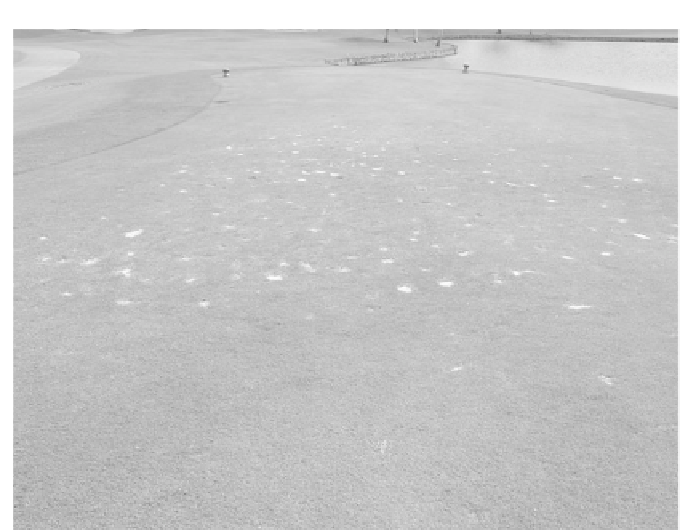Environmental Engineering Reference
In-Depth Information
Fig. 9.7. Numerous divot openings on the tee that have resulted from club strokes.
Mowing height for tees must be low enough that the turf does not
interfere with contact between the ball and club when the ball is teed at
the desired height. A low mowing height also provides a firm, stable
stance for golfers. Heights of 7-10 mm are preferred. In the tropics,
mowing frequency, as dictated by the rule that no more than one-third
of the leaf area should be removed at each mowing (the 'one-third rule'),
usually ranges from every day to every two days. Tees are commonly
mowed with a triplex riding mower with six- to eight-bladed reels.
Mower operation is similar to that previously described for mowing
greens, but grain is of less concern on tees, so usually only two alternating
mowing patterns are used.
Tees require somewhat less fertilization than greens, but sufficient
nutrition must be maintained to provide rapid shoot growth to heal the
extensive damage that results from divots.
Iron applications are quite important in tee fertilization. Monthly to
biweekly applications of ferrous sulphate or ferrous ammonium sulphate
provide excellent colour and increase wear tolerance of the turf grass.
Iron application rates are similar to those used on the putting green.
Other nutrients may be needed occasionally; the need should be deter-
mined from yearly soil-test results.

